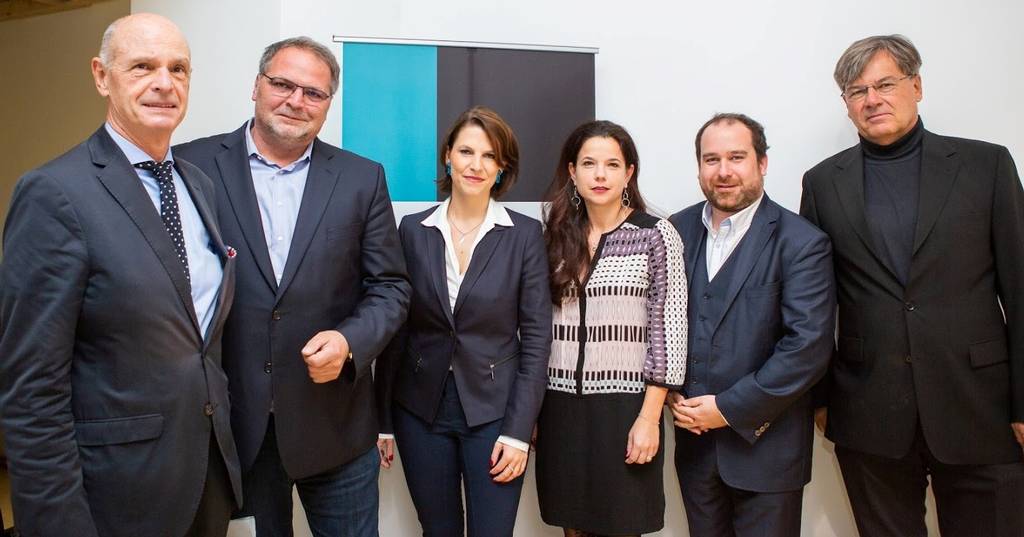Effectiveness and name recognition of Mauthausen Memorial
08.11.2018
As part of a joint project of the Austrian Mauthausen Committee, the market-research company OGM and the Mauthausen Memorial, funded by the Future Fund of the Republic of Austria, a study on the effectiveness and name recognition of the Mauthausen Memorial was carried out.

The study shows that 96 percent of Austrians surveyed were aware of the name ‘KZ-Gedenkstätte Mauthausen’ (‘Mauthausen Memorial’). 74 percent of those surveyed had received information about the Memorial during their time at school and 65 percent of people who had visited the Memorial did so during their school years. Among people under the age of 30, the proportion is significantly higher at 83 percent.
The question of whether subjects such as the crimes of Nazism and the history of the Mauthausen concentration camp should be covered in school was answered in the affirmative by a significant majority (92 percent). Schools, as the most important partner of the Memorial’s historical education work, play an essential role here. ‘This finding encourages me in my goal of making it possible for all pupils to visit the Memorial once during their time at school’, said State Secretary Karoline Edtstadler.
Close cooperation between schools, the Memorial and the Mauthausen Committee also plays an essential role. ‘We’re endeavouring to further expand this cooperation. We’re working on the assumption that the probability of a visit to the Memorial not in connection with school is, unfortunately, very low. There must in future therefore be more measures for people to visit the Memorial outside of their school career’, said Willi Mernyi, Chairperson of the Mauthausen Committee Austria.
School education and interest
The study also shows that people whose highest qualification is a middle-school leaving certificate (Pflichtschulabschluss) have spent significantly less time engaging with the subject that those with Higher Vocational School (BHS) leaving certificate, higher education entrance qualification (Matura) or university degree. In general, the results show that the level of engagement with the subject depends on the length of participation in the school system. At the same time, readiness to engage with the subject was very high among people who had completed all education pathways. In particular, those with minimum compulsory schooling demonstrated a high level of interest (62 percent) in the subject. For these groups, appropriate educational activities should be developed for more in-depth engagement.
Effects of a visit to the Memorial
‘We found that people who have visited the Memorial speak in more depth than those who haven’t visited the site’, explained Christoph Haselmayer, a director at OGM. People who have been to the Memorial also believe that a visit raises awareness of the subject and should be treated correspondingly in Austrian schools. ‘This result underlines once more the significance of a visit to the Memorial as an essential element of engaging with contemporary history’, said Barbara Glück, Director of the Mauthausen Memorial. Those who have visited the Memorial also ascribe a greater international significance to the site.
Social media
According the study, the subject has very little importance within social media, even though this is one of the essential forms of media for people under 30. At the same time, the under-30s receive traditional media on a relatively low scale to inform themselves of the subject. What is unambiguously clear is that there is much room for improvement in social media and that efforts must be made to reach people, especially young people, via these media. There should also be a review of why the under-30s can only be reached to a limited extent via traditional media any more. There is an assumption that these media are no longer consumed, or only consumed to a small extent, in this age range.
Perception of the subcamps and other sites of Nazi crimes
From 1938 to 1945, the Mauthausen concentration camp was the hub of a system of more than 40 subcamps. Only 42 percent of those surveyed knew of other sites in their local area at which Nazi crimes were committed. There is much room for improvement here. ‘The endeavours to communicate to people that Nazi crimes took place not just in Mauthausen but in their own areas must be redoubled’, said Mernyi.